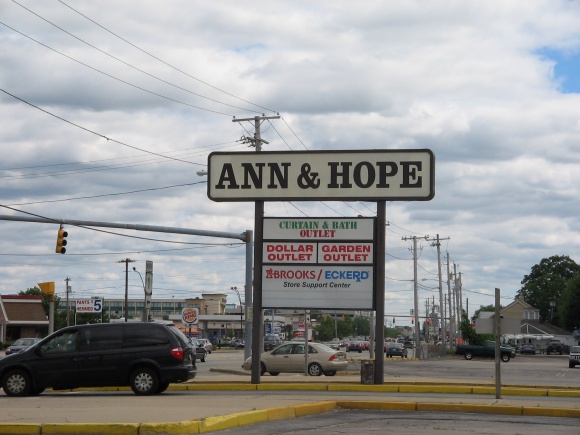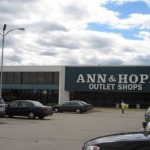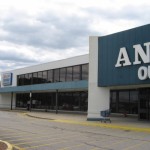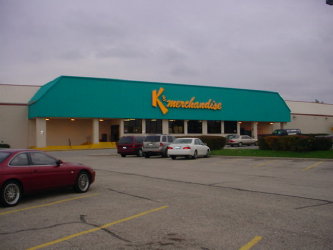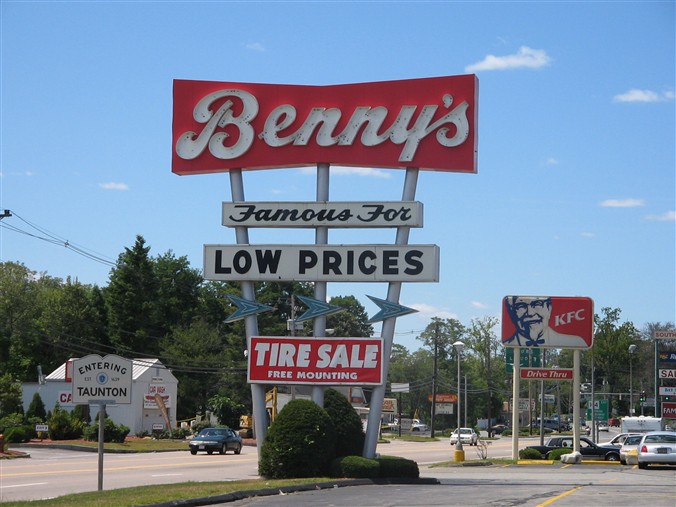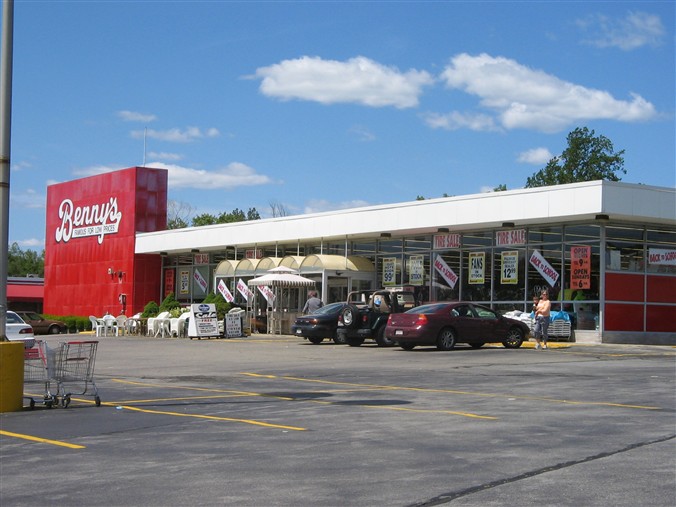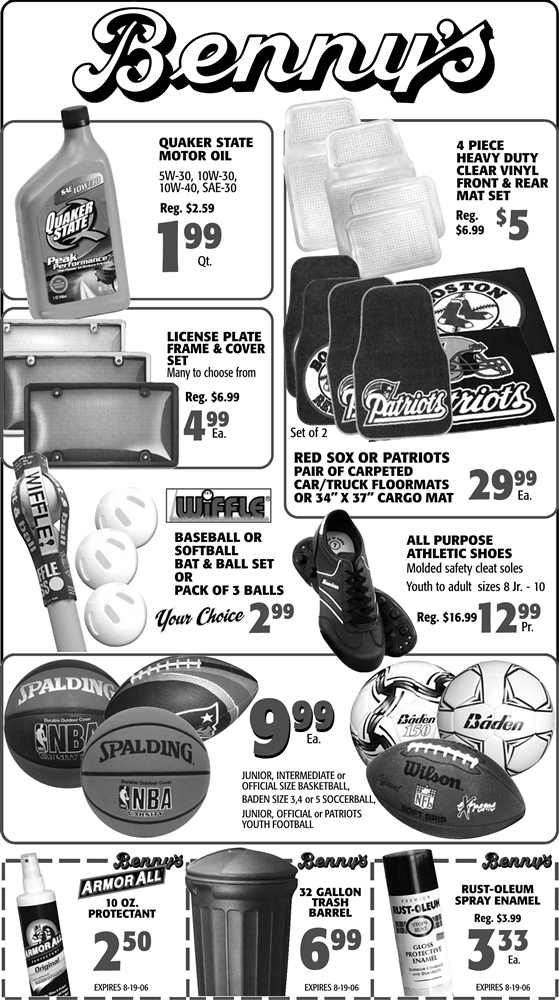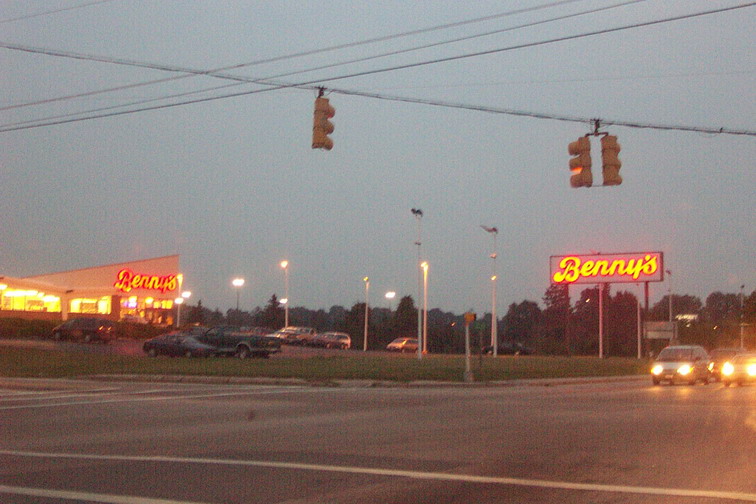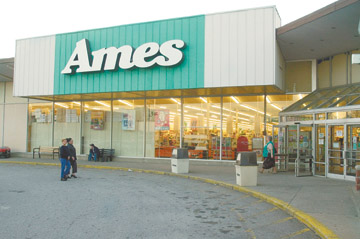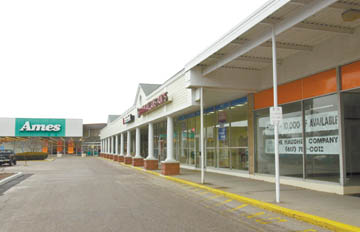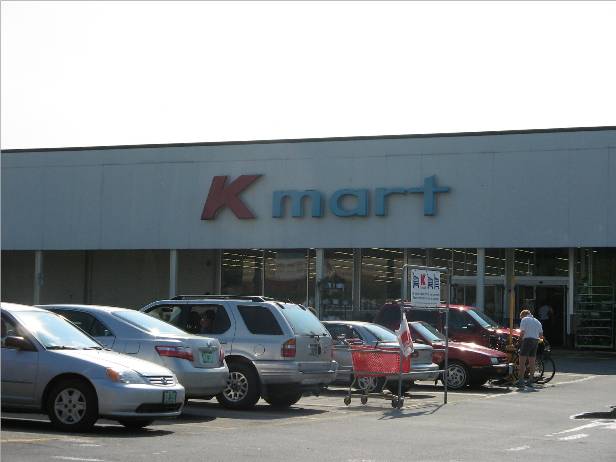We haven’t done one of these in a very, very long time. I recently stumbled upon a cache of old photos that I took in the summer of 2006–in the nascent days of this blog–on a trip back to my home state of Rhode Island to capture some of the retail oddities of my home region. Ann & Hope was one of the most storied retailers in New England during their reign from the 50s until 2001, and is most famously known as the pioneer of discount department store retail. Legend has it that Sam Walton modeled Walmart after their concept.
Ann & Hope was founded by Martin Chase, a Ukrainian immigrant who moved to Providence, Rhode Island when he was six years old. He spent much of his young adulthood working at various clothing retailers, before starting his own store, Chase Clothes, in the 1930s. Chase minimized overhead by using inexpensive store fixtures and not offering frills such as alterations. In the mid-1940s, as the clothing market was depressed due to World War II, Chase began to look at new business ventures to expand into, and he purchased the sprawling Ann & Hope mill complex, named for a ship lost at sea off the coast of Rhode Island in 1806. The mills were located in Cumberland, Rhode Island, just north of Providence. The Ann & Hope complex was made up of large, somewhat disused factory buildings, and Chase split the spaces up and rented them out piecemeal to subtenants and retailers.
In 1953, one of the tenants moved out of the complex and left a large amount of ribbon behind in the mill, and Chase opened the space to the other tenants in the center to purchase the remnants. Inspired by his success, Chase decided to reopen his own retail venture in the space, and gradually expanded his retail operation within the complex. By the end of the 1960s, Ann & Hope had grown to a $40 million-a-year general merchandise business, and Walton’s famed visit occurred in 1961.
Ann & Hope pioneered the discount department store concept, with centralized checkouts, large amounts of merchandise that customers could peruse without sales personnel, and shopping carts. The original Ann & Hope mill location, which was located in oddly-sized rooms on different levels in an old industrial building, also featured shopping cart escalators and a large parking lot, both innovations at the time. Ann & Hope stores also featured a full-service cafeteria and generally had several small sub-tenant spaces such as a flower shop or garden center in the front of the store. Ann & Hope stores typically sold a wide variety of merchandise, including a large grocery section, a wide range of apparel and home goods, as well as electronics, appliances, general merchandise, and more. They carried much of what you would get at a modern Sears or Best Buy, along with many of the softer goods you’d find at Target, all under one very massive roof.
In addition to the original Cumberland location–which bore little physical resemblance to the modern big box store, the chain opened large (often over 200,000 square-foot) suburban-style stores throughout New England. The other locations were in Warwick, Rhode Island; Seekonk, North Dartmouth, Randolph, Danvers, Watertown, and Methuen, Massachusetts. The Watertown and Danvers stores even anchored large regional malls, whereas the other locations were standalone. From the 60s to the 90s, Ann & Hope was a dominant retail force in New England, and many of their stores acted as regional draws much in the same way as malls did, anchoring their respective retail districts and attracting a flurry of commercial development–development that, in many cases, would ultimately spell their demise.
In the spring of 2001, when the economy was weak but was especially struggling in New England, many regional discount chains such as Bradlees, Apex, and Ann & Hope finally found they were unable to compete with larger competitors. Many of these chains, such as Target and Walmart, were able to use the leverage of operating many locations in less-expensive regions of the country to offset the high-cost stores in New England, whereas smaller chains like Ann & Hope simply didn’t have the leverage or buying power to stay on board. All of the store locations, save for the Warwick and Cumberland stores, were closed outright. The remaining two stores were converted to “Curtain and Bath Outlets,” focusing on a few key areas of Ann & Hope’s offering (along with lawn and garden), and a dramatically shrunken footprint. Much of the remainder of the Warwick store even served temporary as the headquarters for Brooks Pharmacy, while their own offices were under construction a few miles away in East Greenwich. The Curtain and Bath Outlet seems strange–and the appeal seems to be primarily to older women–but has proven so successful that the still-surviving chain has opened a total of 11 stores under this new format.
These photos were taken in summer 2006, approximately five years after the closure of this location as a full-service Ann & Hope store. The exterior of the building is largely unchanged from pre-2001, except for the addition of the ugly “OUTLET STORES” sign below the main A&H signage. The Curtain and Bath concept was operating, however, hence why I was able to get inside and snap a few quick pictures, but it’s important to note that this bears very little resemblance to the original Ann & Hope, which was significantly more comparable to a higher-end Walmart Supercenter or the hypermarket chains like Meijer, Fred Meyer, or Bigg’s.
- A photo of the Danvers, Massachusetts store, in the Liberty Tree Mall
- The original Cumberland, RI location
- Ann & Hope logo, from the last days

